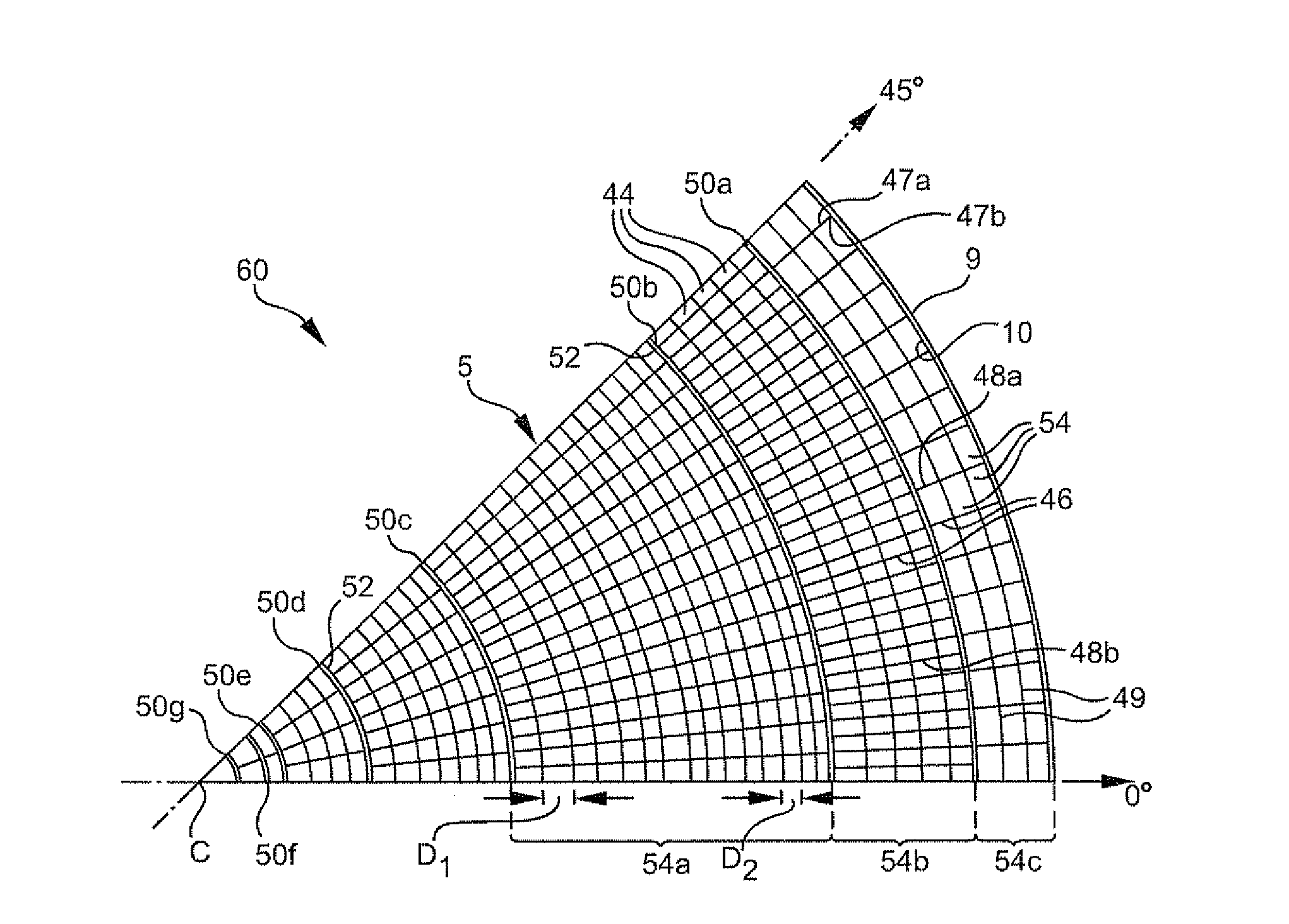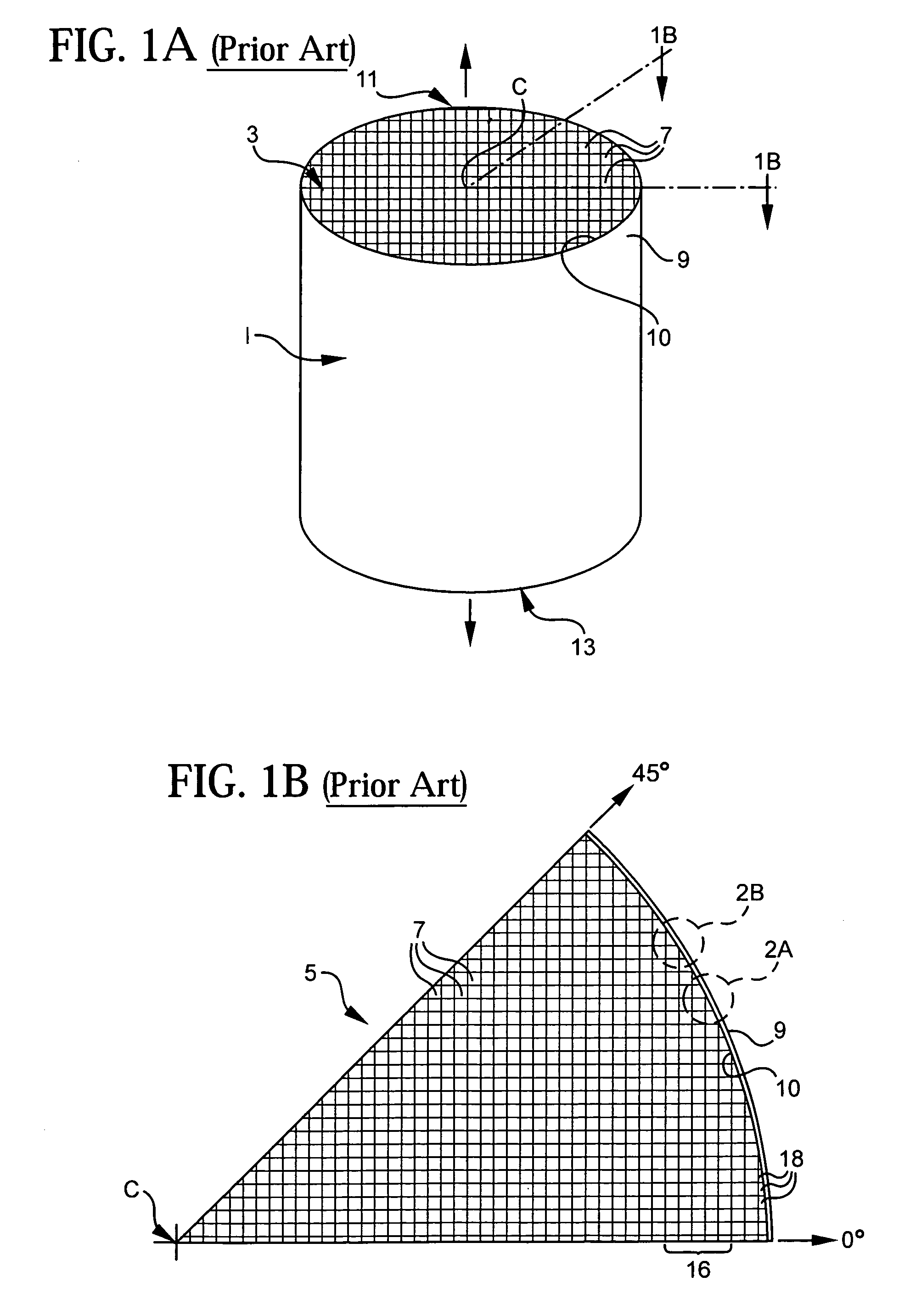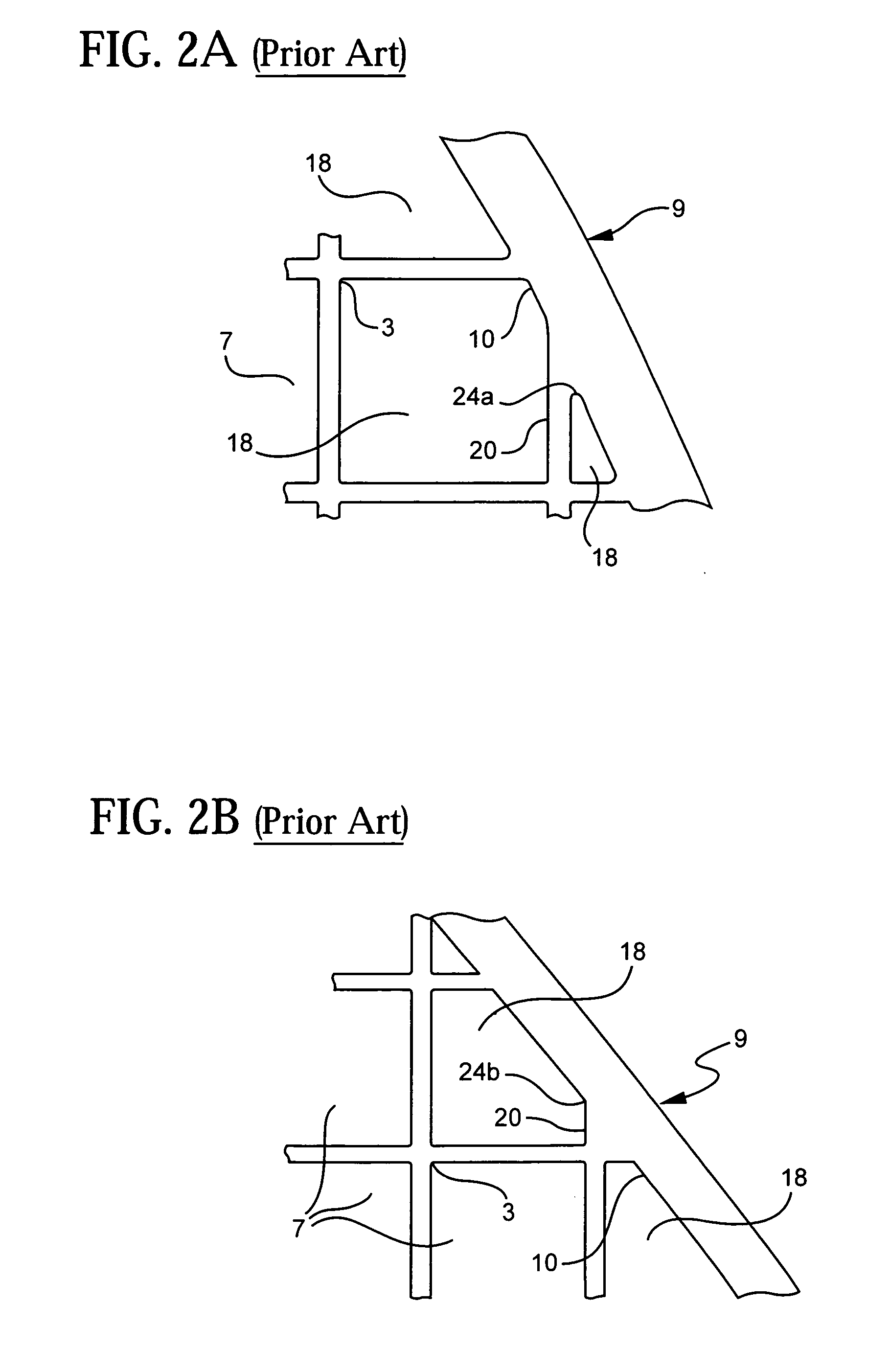Radial cell ceramic honeycomb structure
a ceramic honeycomb and radial cell technology, applied in the field of ceramic honeycomb structures, can solve the problems of unacceptably high cell density, unacceptably high pressure drop across the honeycomb structure, and difficult structure, if not impossible to manufacture, and achieve the effect of removing stresses
- Summary
- Abstract
- Description
- Claims
- Application Information
AI Technical Summary
Benefits of technology
Problems solved by technology
Method used
Image
Examples
embodiment 60
[0027]FIG. 4 illustrates an octant section of an alternate embodiment of the invention. This embodiment is in all respects identical to the embodiment described with respect to FIG. 3, with the exception that every other radial web 46 has been removed from the network 5 in the most peripheral zone 54c, such that the resulting radial cells 54 are twice as large as the balance of the radial cells 44 in the network 5. Hence, in this embodiment, the number of radial webs 46 actually decreases in the radial direction toward the outer skin 9, in contrast to the FIG. 3 embodiment wherein the number of radial webs 46 increases at all points along the radius toward the outer skin 9. The reduction of radial webs 46 in the outermost peripheral portion 54c promotes a larger flow of exhaust gases toward the periphery of the alternate embodiment 60, which thereby reduces the heat gradient across the radius of the ceramic substrate 60 in order to reduce thermally-induced stresses which can sometim...
embodiment 40
[0030]FIG. 6 is a bar graph illustrating the percentage improvement in stress of the FIG. 3 embodiment 40 over the ceramic substrate 1 illustrated in FIGS. 1A and 1B. Here, it can be seen that the average stresses generated as a result of radial tension, radial compression, down-heat up load, and cool down thermal loading are substantially less (are improved) for the inventive ceramic honeycomb illustrated in FIG. 3 versus the prior art illustrated in FIGS. 1A and 1B. In particular, the invention exhibited a large average decrease in maximum stress over its 360° circumference, with greater than 20% improvement in all categories.
[0031]In all cases of comparative peripheral stresses generated by tension, compression, heat up and cool down thermal load, the stresses generated within the inventive structures is highly uniform between 0 degrees and 45 degrees. By contrast, the peripheral stresses generated within the prior art structure 1 oscillate around the circumference of the structu...
PUM
| Property | Measurement | Unit |
|---|---|---|
| temperature | aaaaa | aaaaa |
| temperature | aaaaa | aaaaa |
| temperature | aaaaa | aaaaa |
Abstract
Description
Claims
Application Information
 Login to View More
Login to View More - R&D
- Intellectual Property
- Life Sciences
- Materials
- Tech Scout
- Unparalleled Data Quality
- Higher Quality Content
- 60% Fewer Hallucinations
Browse by: Latest US Patents, China's latest patents, Technical Efficacy Thesaurus, Application Domain, Technology Topic, Popular Technical Reports.
© 2025 PatSnap. All rights reserved.Legal|Privacy policy|Modern Slavery Act Transparency Statement|Sitemap|About US| Contact US: help@patsnap.com



